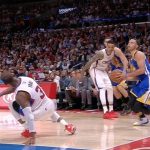While much of the fun at the Kentucky Derby is in placing a bet and winning big, then celebrating your wins with a round of mint juleps for all your friends, there is also a fascinating culture that surrounds the Derby, which ranks the event right alongside the Master’s Tournament in Georgia and the Daytona 500 as the Big Three annual sports events in the south.
- Advertisement -
If you’re looking at odds at select venues like Sportsbook.ag (at https://www.sportsbook.ag/sbk/sportsbook4/horse-racing-betting/kentucky-derby-winner.sbk) then you know you’ve got that angle (and your bar tab) covered. But you are also investing in what is a deeply distinguished cultural event, honored by the state that bears its name.
The Derby dictates style for the aristocracy of the south and is a great spring coming out party, marking the end of winter. One Derby, on May 2, 1959, was run in temperatures of 94 degrees Fahrenheit. The coldest, meanwhile, was run on May 4, 1940, when it was 36 degrees.
- Advertisement -
Of course, people are more fascinating than the weather (unless you are a 3-year old Thoroughbred about to run a race). And, were you aware that the history of the Derby includes several former slaves who either rode to the victor’s circle or trained horses that took home the collar of roses?
The Kentucky Derby is dominated these days by riders of Hispanic or European descent, but that has not always been the case. Point of fact, the first 28 races saw a near even split between blacks and whites claiming the wreath of roses at the grandest horse race of them all. Between the first Kentucky Derby in 1875 and the 28th in 1902, black jockeys won the derby 15 times. In two of the first three derbies, two of the trainers were former slaves.
- Advertisement -
One of those trainers, Ansel Williamson, worked with black jockey Oliver Lewis to win the first Kentucky Derby riding Aristides to victory in 2.37.75. The team went on to place second in the Belmont Stakes, which is now the third and final race of the famous Triple Crown, which was begun in 1919 and includes the Preakness Stakes.
Williamson’s birth date is in dispute, but it is known he was born a slave in Virginia and purchased in 1864 by a famous Thoroughbred and Standardbred breeder Robert Alexander, who owned the Woodburn Stud farm near Midway, Kentucky.
Alexander also purchased Edward D. Brown, when Brown was seven. He was trained as a horse groomer and jockey, riding to many victories after he was freed from slavery. Brown won the 1879 Belmont Stakes, riding Kingfisher before turning his attention to training horses, as his adult weight made him a poor choice as a jockey.
Robert Alexander died in 1867, shortly after the Civil War, after which Brown rode for Daniel Swigert who had been the manager at Woodburn Stud farm. That gave Brown an opportunity to train Kentucky Derby winner Baden-Baden, in 1877, the third Derby, which was ridden by Billy Walker, also a former slave.
Brown went on, famously, to compete with the wealthy aristocracy of horse farm owners by putting his vast knowledge of horses to the test, buying sometimes untested horses cheap, then using his training skills to turn them into competitors.
In this fashion, Brown saw the potential in the weanling Ben Brush, who became the 1895 U.S. Champion 2-year old and the 1896 winner of the Kentucky Derby. In addition, Brown trained a colt named Plaudit at a bargain price before selling him to John Madden, who took Plaudit to a victory in the Kentucky Derby at Churchill Downs in 1898.
When he died in 1903, Brown was said to be one of the wealthiest blacks in the state of Kentucky.
Williamson, meanwhile, who was also purchased by Robert Alexander, trained two undefeated horses, Norfolk and Asteroid and trained a slew of horses with brilliant careers, winning many big races along the way, including the Travers Stake, the Jerome Handicap the Withers Stakes.
Oliver Lewis, winner of the first Kentucky Derby, was honored by the state in 2010, with the Newton Pike Extension in Lexington named the Oliver Lewis Way.
Jockey Billy Walker, winner of the third Kentucky Derby, died in 1933 and is buried in Louisville Cemetery, but Churchill Downs honored him by erecting a headstone in his honor during the 1996 Kentucky Derby, as his grave had been previously unmarked.
After winning the Derby, Walker’s career was very distinguished. He notched the most wins of any jockey at Churchill Downs in the 1875-1876 season and from the spring of 1876 through 1878. He rode Ten Broeck to victory in a famous match race against Mollie McCarty, a celebrated mare from California







